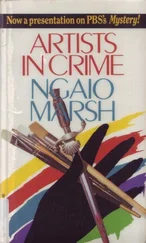Sarah Bolton - Famous European Artists
Здесь есть возможность читать онлайн «Sarah Bolton - Famous European Artists» — ознакомительный отрывок электронной книги совершенно бесплатно, а после прочтения отрывка купить полную версию. В некоторых случаях можно слушать аудио, скачать через торрент в формате fb2 и присутствует краткое содержание. ISBN: , Жанр: foreign_prose, foreign_antique, foreign_language, на английском языке. Описание произведения, (предисловие) а так же отзывы посетителей доступны на портале библиотеки ЛибКат.
- Название:Famous European Artists
- Автор:
- Жанр:
- Год:неизвестен
- ISBN:http://www.gutenberg.org/ebooks/39380
- Рейтинг книги:5 / 5. Голосов: 1
-
Избранное:Добавить в избранное
- Отзывы:
-
Ваша оценка:
- 100
- 1
- 2
- 3
- 4
- 5
Famous European Artists: краткое содержание, описание и аннотация
Предлагаем к чтению аннотацию, описание, краткое содержание или предисловие (зависит от того, что написал сам автор книги «Famous European Artists»). Если вы не нашли необходимую информацию о книге — напишите в комментариях, мы постараемся отыскать её.
Famous European Artists — читать онлайн ознакомительный отрывок
Ниже представлен текст книги, разбитый по страницам. Система сохранения места последней прочитанной страницы, позволяет с удобством читать онлайн бесплатно книгу «Famous European Artists», без необходимости каждый раз заново искать на чём Вы остановились. Поставьте закладку, и сможете в любой момент перейти на страницу, на которой закончили чтение.
Интервал:
Закладка:
To which Michael Angelo wrote the following reply: —
"Grateful is sleep, whilst wrong and shame survive
More grateful still in senseless stone to live;
Gladly both sight and hearing I forego;
Oh, then, awake me not. Hush – whisper low."
Of Day, Mrs. Oliphant says, in her "Makers of Florence," "Bursting herculean from his strong prison, half heroic, nothing known of him but the great brow and resolute eyes, and those vast limbs, which were not yet free from the cohesion of the marble, though alive with such strain of action."
Twilight is the strong figure of a man. Dawn, or Morning, Grimm considers "the most beautiful of all. She is lying outstretched on the gently sloping side of the lid of the sarcophagus. Not, however, resting, but as if, still in sleep, she had moved towards us; so that, while the upper part of the back is still reclining, the lower part is turned to us. She is lying on her right side; the leg next us, only feebly bent at the knee is stretching itself out; the other is half drawn up, and with the knee bent out, as if it was stepping forward and seeking for sure footing. An entire symphony of Beethoven lies in this statue."
In 1534, the same year in which the Medici statues were finished, Michael Angelo's father died, at the age of ninety. The artist gave him a costly burial, and wrote a pathetic poem in his memory. The beloved brother, Buonarotto, had died in Michael Angelo's arms. His young mother had died years before when he went to Rome, scarcely more than a boy.
"Already had I wept and sighed so much,
I thought all grief forever at an end,
Exhaled in sighs, shed forth in bitter tears.
For thee, my brother, and for him who was
Of thee and me the parent, love inspires
A grief unspeakable to vex and sting.
Full ninety times the sun had bathed his face
In the wet ocean, ending his annual round
Ere thou attainedst to the Peace Divine.
There, where (to Him be thanks!) I think thee now,
And hope to see again if my cold heart
Be raised from earthly mire to where thou art.
And if 'twixt sire and son the noblest love
Still grows in Heaven, where every virtue grows,
While giving glory to my heavenly Lord,
I shall rejoice with thee in Heaven's bliss."
Clement was now dead, and Paul III. was in the papal chair. He, like the others, desired that Michael Angelo should do some great work to immortalize his reign. Clement had wished the artist to paint the "Last Judgment" in the Sistine Chapel, and when Paul urged the carrying-out of this plan, Michael Angelo excused himself on account of the contract with the heirs of Julius II.
"It is now thirty years," cried Paul III., "that I have had this desire; and, now that I am pope, shall I not be able to effect it? Where is the contract, that I may tear it?"
One day he appeared in the studio of the painter, bringing with him eight cardinals, all of whom wished to see the designs for the "Last Judgment."
The artist was still at work on Moses. "This one statue is sufficient to be a worthy monument to Pope Julius," said the cardinal of Mantua. Paul III. refused to release Michael Angelo, and he began work on the Sistine Chapel.
The painting was not completed until nearly eight years had passed. There are three hundred figures and heads in this vast fresco. Says M. F. Sweetser, in his concise and excellent life of Michael Angelo, "About Christ are many renowned saints, – the Madonna, gazing mildly at the blessed and redeemed souls; Adam and Eve, curiously regarding the Judge; and a group of pleading apostles, bearing their emblems. These are surrounded by a vast throng of saints and martyrs, safe in Heaven, all of whom exemplify the saying that 'Michael Angelo nowhere admits, either into heaven or hell, any but the physically powerful.' Below the Judge are four angels blowing trumpets towards the four quarters of the universe, and four others holding the books by which the dead are to be judged. Under these the land and sea are giving up their dead… As a work of art, the Last Judgment was one of the grandest productions of the famous art-century."
Biagio da Cesena, the pope's master of ceremonies, complained that so many naked figures made the painting more appropriate for bath-rooms and stables than for a chapel. What was the surprise of Biagio, when the painting was thrown open to the public, to find that the infernal judge Minos, with ass's ears, was his own portrait! He begged the pope to punish the artist; but Paul replied, "If the painter had placed thee in purgatory, I should have used every effort to help thee; but since he has put thee in hell, it is useless to have recourse to me, because ex infernis nulla est redemptio ."
Paul IV. later complained that the figures were shamefully nude, and desired to have them covered. "Tell his Holiness," said Michael Angelo, "that this is a mere trifle, and can be easily done; let him mend the world, paintings are easily mended." Paul finally had the nude figures draped by Daniele da Volterra, who thereupon bore the nickname of "the breeches-maker."
While painting this picture, the artist fell from the scaffold and injured his leg seriously. He refused to allow anything to be done for him, but his friend, the surgeon Rontini, forced his way into the house, and cared for him until he recovered.
These eight years had been the happiest of Michael Angelo's life. Before this time he had been cold in manner, often melancholy, and sometimes overbearing; now he was gentle, cheerful, and affectionate. He had written home in early life, "I have no friends; I need none, and wish to have none." Now he had found, what every human being needs, a friend whose tastes and aspirations were like his own. At sixty, he met and loved Vittoria Colonna, a woman whose mind was henceforward to be his inspiration, and whose sweet nature was to be his rest and satisfaction forever. For such a mind as Michael Angelo's there are few kindred spirits. Fortunate was he that the blessed gift came, even though late in life.
Vittoria was the daughter of Fabrizio Colonna, and the widow of Marchese di Pescara, the two highest nobles and generals of her time. Tenderly reared and highly educated, she had married at nineteen, her husband soon after engaging in the wars of the time. He was wounded at Pavia, and died before his young wife could reach him. He was buried at Milan, but the body was afterwards removed to Naples with great magnificence.
Vittoria, childless, well-nigh heart-broken, turned to literature as her solace. She desired to enter a convent; but the bishop of Carpentros, afterwards a cardinal, and an intimate friend of Vittoria, hastened to Paul III., who forbade the abbess and nuns of San Silvestro, on pain of excommunication, to permit her to take the veil. Vittoria must not be lost to the world.
When her poems were published, says T. Adolphus Trollope, in his life of this charming woman, "copies were as eagerly sought for as the novel of the season at a nineteenth-century circulating library. Cardinals, bishops, poets, wits, diplomatists, passed them from one to another, made them the subject of their correspondence with each other and with the fair mourner."
Hallam says, "The rare virtues and consummate talents of this lady were the theme of all Italy in that brilliant age of her literature."
Vittoria Colonna is one of the best illustrations in history of what a noble and intellectual woman can do for the upbuilding of society. Many gifted men gave her a sincere affection, and she held that affection while life lasted. She was well read in history, religious matters, and classic literature. Her first visit to Rome was a continued ovation. Even the Emperor Charles V. called upon her. Unselfish, sympathetic, with a gentle and winsome manner that drew every one into confidence, she proved herself a companion for the most highly educated, and a helper for the lowly.
Читать дальшеИнтервал:
Закладка:
Похожие книги на «Famous European Artists»
Представляем Вашему вниманию похожие книги на «Famous European Artists» списком для выбора. Мы отобрали схожую по названию и смыслу литературу в надежде предоставить читателям больше вариантов отыскать новые, интересные, ещё непрочитанные произведения.
Обсуждение, отзывы о книге «Famous European Artists» и просто собственные мнения читателей. Оставьте ваши комментарии, напишите, что Вы думаете о произведении, его смысле или главных героях. Укажите что конкретно понравилось, а что нет, и почему Вы так считаете.












